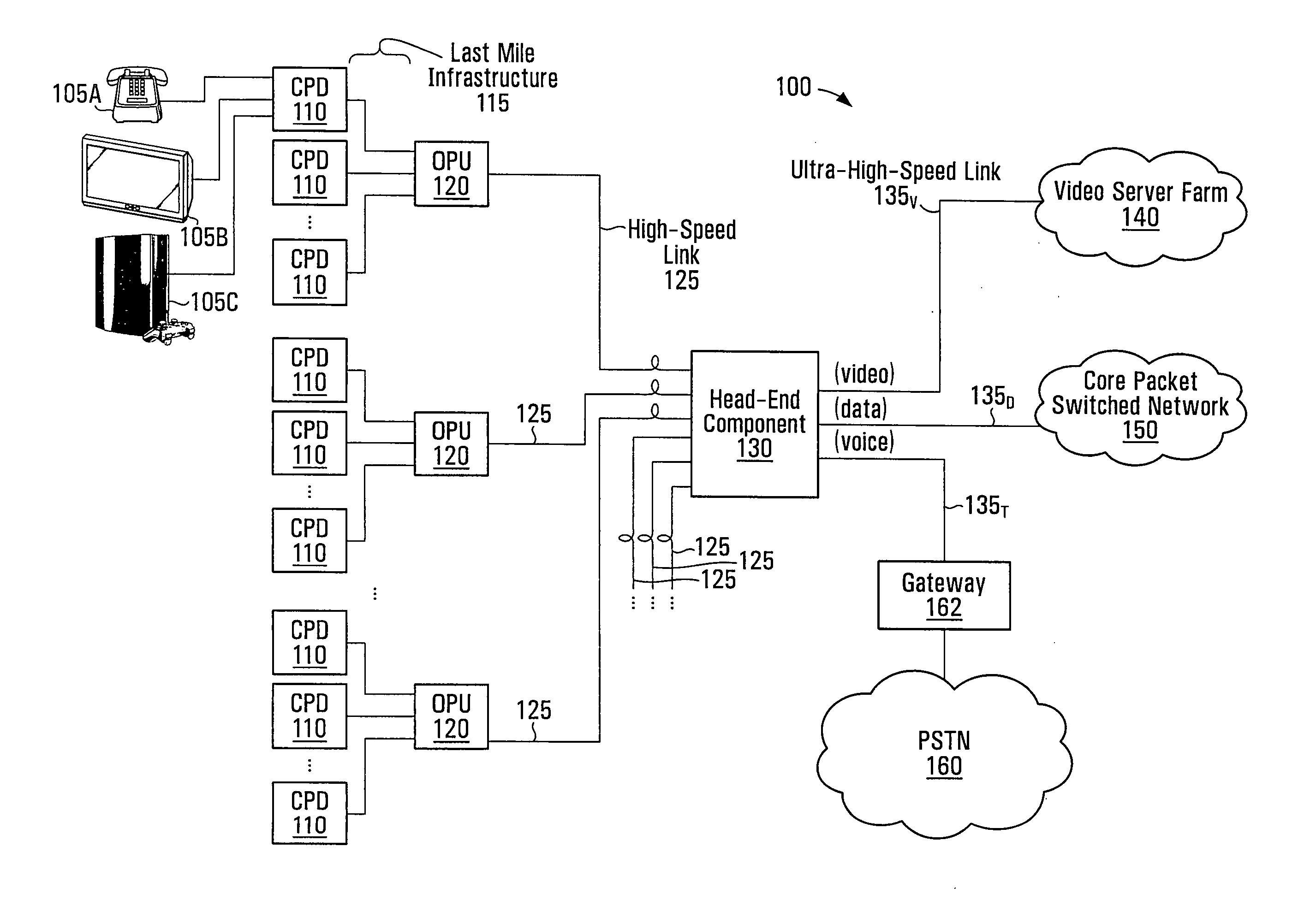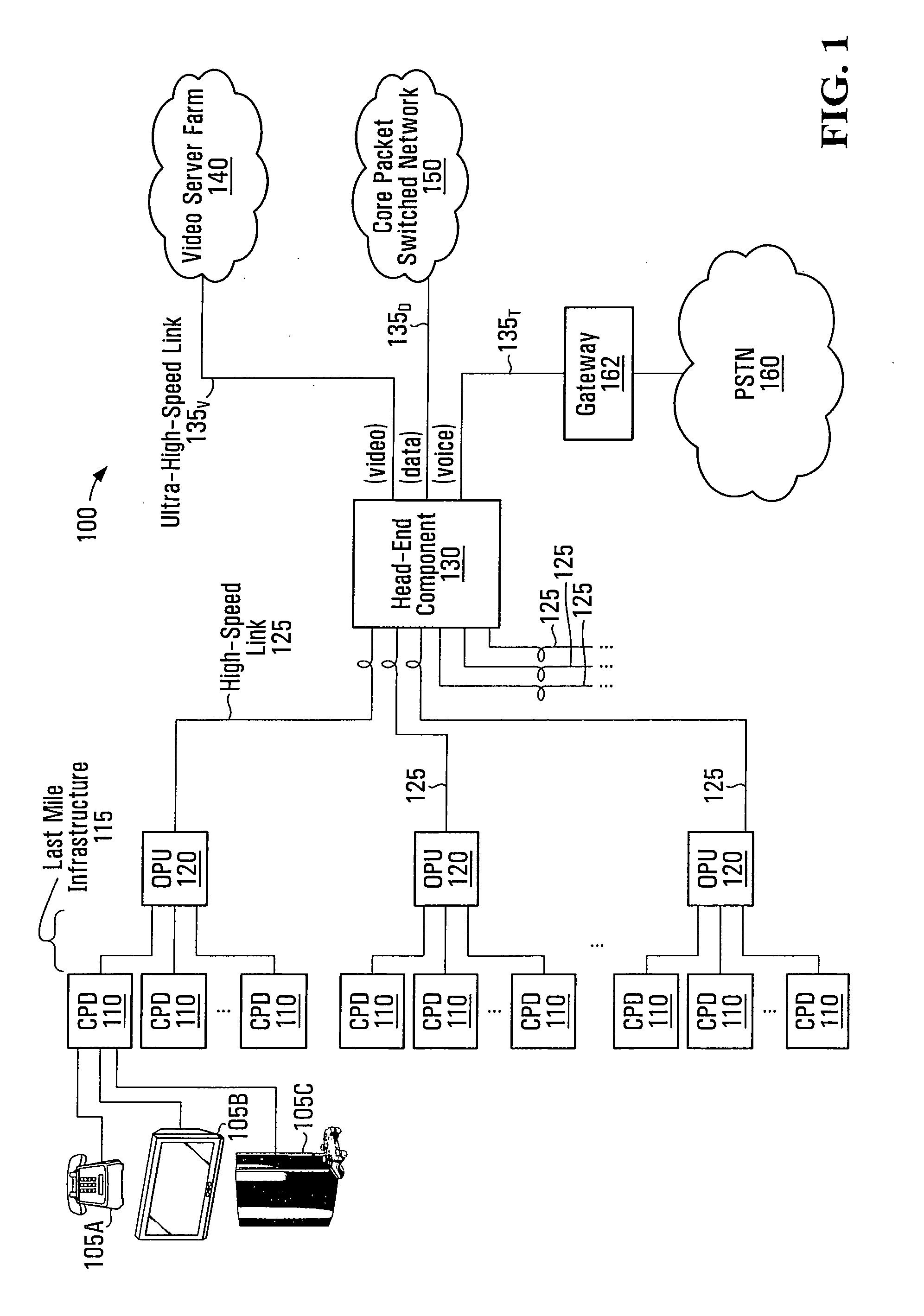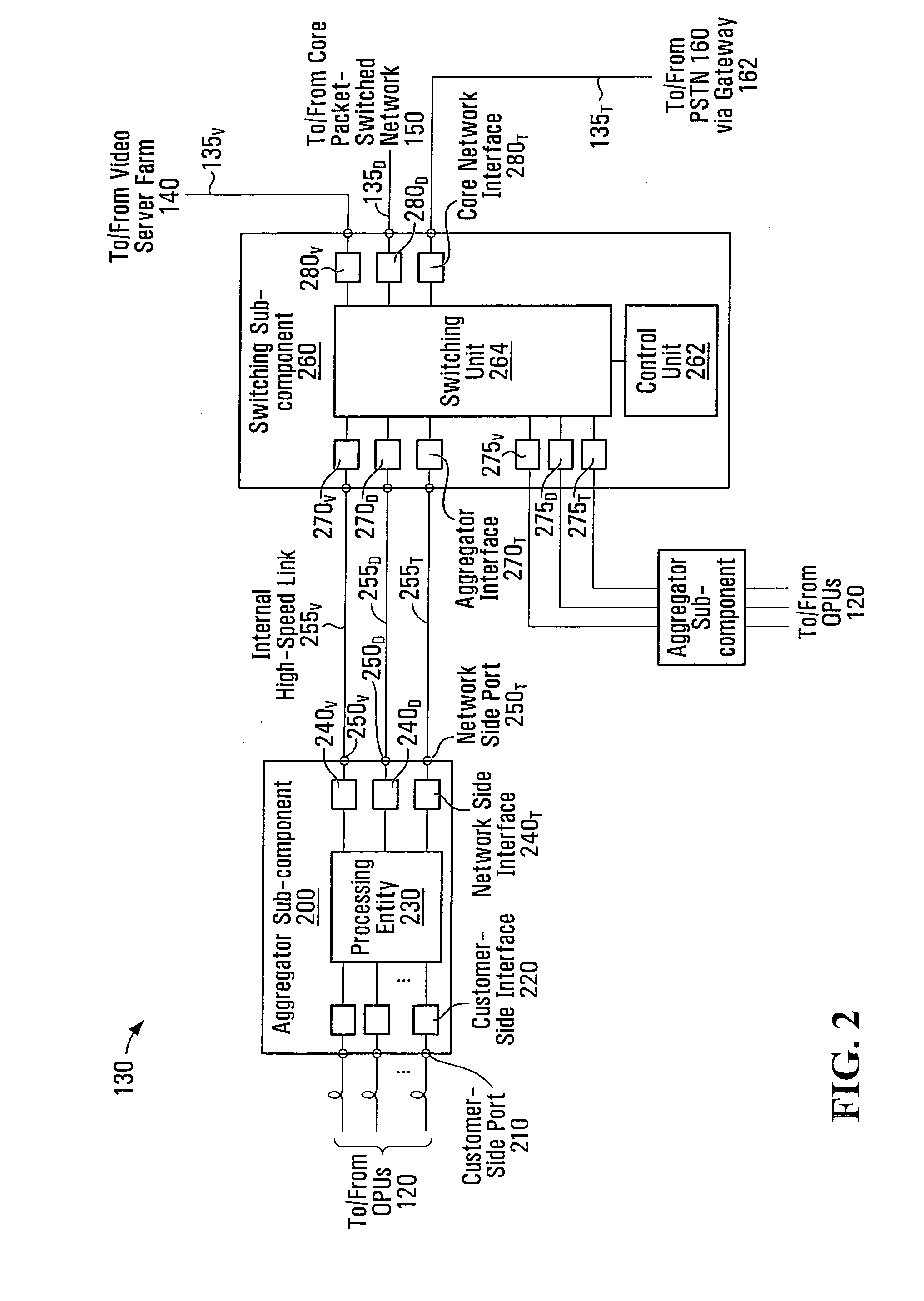Method and system for service-based regulation of traffic flow to customer premises devices
a technology of traffic flow and customer premises, applied in the field of telecommunications services, can solve the problems of increased cost, reduced service life, and reduced service life of remote units, and achieve the effect of reducing the cost of use, reducing the cost of operation, and improving the cost of operation
- Summary
- Abstract
- Description
- Claims
- Application Information
AI Technical Summary
Benefits of technology
Problems solved by technology
Method used
Image
Examples
Embodiment Construction
[0021]In accordance with a non-limiting embodiment of the present invention, and with reference to FIG. 1, a system 100 for the service-based regulation of traffic flow to customer premises devices (CPDs) is presented. The system 100 includes a plurality of CPDs 110 that are distributed throughout a particular geographic region, such as an urban, sub-urban or rural area. Examples of geographic regions throughout which the CPDs 110 may be distributed include residential areas (e.g., apartment buildings, housing developments), commercial areas (e.g., individual retail stores, shopping malls, office buildings) and industrial areas (e.g., factories, warehouses, industrial parks).
[0022]The system 100 also includes a plurality of Outside Plant Units (OPUs) 120. Each of the OPUs 120 is connected to a subset of the CPDs 110 in a particular geographic area. This connection is achieved over a so-called “last-mile” infrastructure 115, which belongs to or is managed by a network access provider...
PUM
 Login to View More
Login to View More Abstract
Description
Claims
Application Information
 Login to View More
Login to View More - R&D
- Intellectual Property
- Life Sciences
- Materials
- Tech Scout
- Unparalleled Data Quality
- Higher Quality Content
- 60% Fewer Hallucinations
Browse by: Latest US Patents, China's latest patents, Technical Efficacy Thesaurus, Application Domain, Technology Topic, Popular Technical Reports.
© 2025 PatSnap. All rights reserved.Legal|Privacy policy|Modern Slavery Act Transparency Statement|Sitemap|About US| Contact US: help@patsnap.com



